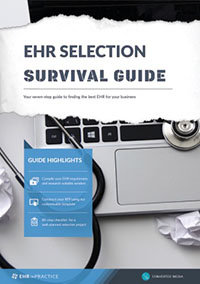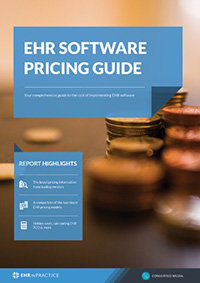4 Ways EHR Software Can Help You Transition to ICD-10
As providers prepare for ICD-10 implementation in October 2015, they are likely to be thinking about how they can meet meaningful use guidelines as well. The goal of ICD-10 and meaningful use is to allow hospitals and providers to share information. The best way to achieve this is through interoperability of EHR. Here are 4 ways EHR helps streamline the process into ICD-10.
1. Meeting CMS and Congressional Expectations
In December 2014, Congress passed the 2015 Omnibus Appropriations bill, which asks that the Office of the National Coordinator for Health use its authority to decertify any products hindering the sharing of patient information - one of the goals behind ICD-10 implementation.
If your EHR system already meets meaningful use guidelines, you will stand the best chance of transitioning to ICD-10 smoothly. If not, now is the time to consider upgrading your EHR to aid you in transitioning to ICD-10 and to meet meaningful use. EHR is needed in order to be interoperative with other provider’s and hospital’s EHR so that patient information can be shared securely, allowing for improved quality of care between facilities.
2. Real-Time Access
Many EHR systems now offer real-time data access. Consider this: a patient comes into the office, sees the provider, who then sends the patient for labs and diagnosis imaging. The patient gets his or her blood drawn, the imaging done, and comes back to the provider in two days. With EHR, the provider, the lab technician, and the imaging technician are capable of sharing, locating and accessing a patient’s entire health history.
EHR allows the real-time data access necessary to appropriately code procedures, leading to fewer requests for additional information from insurance companies.
What this means for ICD-10 is that your billing department or billing coordinator has access to all relevant health information to decide on appropriate procedure codes and diagnosis codes to bill. Remember, the purpose of ICD-10 is to implement more specificity into medical diagnosis. EHR allows the real-time data access necessary to appropriately code procedures, leading to fewer requests for additional information from insurance companies.
3. Ease of Diagnosis
Hand-in-hand with real-time access is the capability to make diagnosis easier. EHR is built to contain patient information, allowing for efficient use of the information (better health data tracking, ease of sharing, and, of course, specificity in diagnosis). ICD-9 has around 7,000 codes while ICD-10 holds more than 14,000 codes. Drs. Walt Whitney, Jason Miller, and Chuck Brownlow explain in an article for the American Optometric Association that most EHR systems are capable of supporting ICD-10 in similar ways as they support ICD-9. Most EHR systems can grab keywords from a patient record and suggest diagnosis codes fitting the condition documented.
Many EHR systems also have the ability to house templates. For providers, it means, if a template is created well, patient information can be entered into a system more quickly, in a specific form, allowing for uniformity across the entire EHR.
Setting up an efficient documentation method, utilizing EHR, is important for ICD-10 implementation. The CMS will require that specific diagnosis codes, supported by a patient’s medical record, be billed. Coders should be able to assign diagnosis codes to each claim based on the information housed in the EHR. If everything is templated, the coder can find the information more efficiently, allowing claims to get to the carriers quicker.
4. Tracking and Sharing
Each of these reasons leads towards the idea behind the United States’ transition to ICD-10; better health data tracking and sharing. Real-time access allows providers to see the entire patient record. In addition to that, it allows practices and hospitals to easily share information between facilities, creating a more comprehensive patient record.
Not only does this help when diagnosing the patient (with ICD-10 codes suggested by your EHR and confirmed by your coder after review of the documentation housed by your EHR), but it also allows regions to track trending health data. For example, a rise in gluten intolerance within a region can be monitored and identified when all information is housed within an EHR, which can track the frequency of diagnosis codes assigned and billed. All this leads to better communication between U.S. providers and foreign providers, which will lead to the ultimate goal of ICD-10; better treatments and patient care outcomes.
EHR can make your practice's transition to ICD-10 easier by streamlining office processes, improving patient documentation and access, and by supporting diagnosis with ICD-10 suggestions based on patient information. You didn’t think you were going to learn all 14,000 codes did you?
Free white paper

EHR Selection Survival Guide
The comprehensive guide to selecting the best EHR system for your medical practice.

Featured white papers
Related articles
-

Medical billing software: how it takes the strain off your finance team
Three areas where medical billing software can make life easier for your finances team
-

The Pros and Cons of the ICD-10 Transition: Does One Outweigh the Other?
The ICD-10 transition is less than a year away, but do the pros of ICD-10 outweigh the cons?
-

ICD-10: where does EHR stand six months on?
How the ICD-10 transition has affected the landscape for EHRs and health IT




